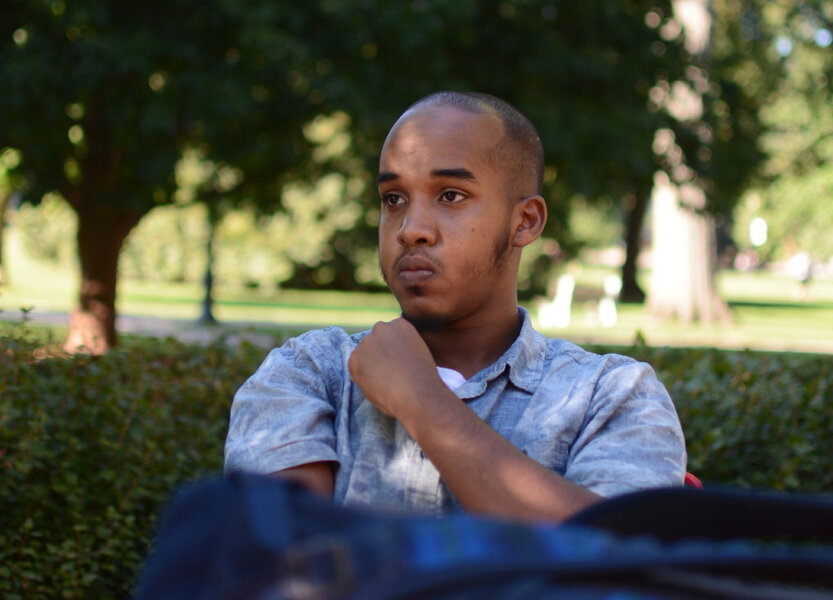Ohio State attack bears 'hallmarks' of self-radicalization
Loading...
| COLUMBUS, Ohio
Investigators are looking into whether a car-and-knife attack at Ohio State University that injured 11 people was an act of terror by a Somali-born student who had once criticized the media for its portrayal of Muslims.
The attacker, identified as Abdul Razak Ali Artan, plowed his car into a group of pedestrians on campus shortly before 10 a.m. Monday, and then got out and began stabbing people with a butcher knife before he was shot to death by a campus police officer, authorities said.
A motive was not immediately known, but police said they were investigating whether it was a terrorist attack.
Mr. Artan was born in Somalia and was a legal permanent US resident, according to a US official who was not authorized to discuss the case and spoke on the condition of anonymity. The FBI joined the investigation.
Ohio State University police Chief Craig Stone said Artan deliberately drove his small gray Honda over a curb outside an engineering classroom building and then began knifing people. Officer Alan Horujko, who was nearby because of a gas leak arrived on the scene and shot the driver in less than a minute, Mr. Stone said.
Angshuman Kapil, a graduate student, was outside Watts Hall when the car barreled onto the sidewalk.
"It just hit everybody who was in front," he said. "After that everybody was shouting, 'Run! Run! Run!'"
Eleven victims were taken to three Columbus hospitals. Most had been hurt by the car, and two had been stabbed, officials said. One had a fractured skull.
Several prayer vigils were held Monday night to support the victims and the community.
Classes at OSU were canceled after the attack, but were scheduled to resume Tuesday.
Students said they were nervous about returning and planned to take precautions such as not walking alone.
"It's kind of nerve-wracking going back to class right after it," said Kaitlin Conner, 18, of Cleveland, who said she had a midterm exam to take Tuesday.
Rep. Adam Schiff, of California, the top Democrat on the House Intelligence Committee, said the act bore the hallmarks of an attack carried out by someone who may have been self-radicalized.
Ohio State's student newspaper, The Lantern, ran an interview in August with a student named Abdul Razak Artan, who identified himself as a Muslim and a third-year logistics management student who had just transferred from Columbus State in the fall.
He said he was looking for a place to pray openly and worried about how he would be received.
"I was kind of scared with everything going on in the media. I'm a Muslim, it's not what media portrays me to be," he told the newspaper. "If people look at me, a Muslim praying, I don't know what they're going to think, what's going to happen. But I don't blame them. It's the media that put that picture in their heads."
In recent months, federal law enforcement officials have raised concerns about online extremist propaganda that encourages knife and car attacks, which are easier to pull off than bombings.
The Islamic State group has urged sympathizers online to carry out lone-wolf attacks in their home countries with whatever weapons are available to them.
Artan was not known to the FBI prior to Monday's attack, according to a law enforcement official who was not authorized to discuss an ongoing investigation and spoke on the condition of anonymity.
Dozens of FBI agents began searching Artan's apartment Monday night.
Neighbors said he was always polite and attended daily prayer services at a mosque on the city's west side.
Leaders of Muslim organizations and mosques in the Columbus area condemned the attacks while cautioning people against jumping to conclusions or blaming a religion or an ethnicity.
Surveillance photos showed Artan in the car by himself just before the attack, but investigators are looking into whether anyone else was involved, the campus police chief said.







